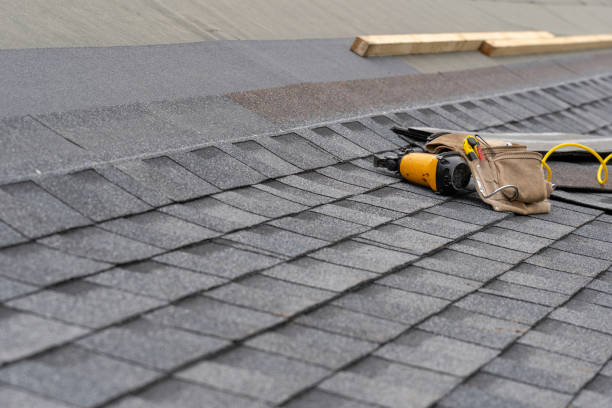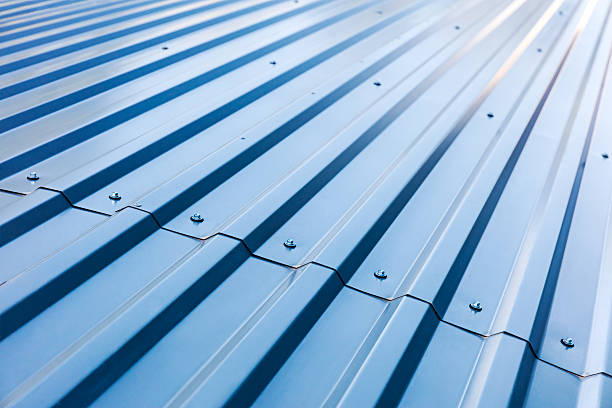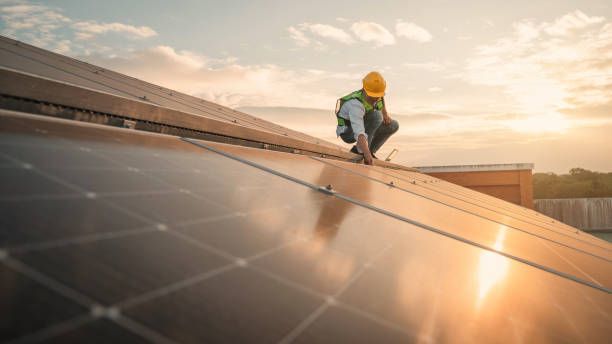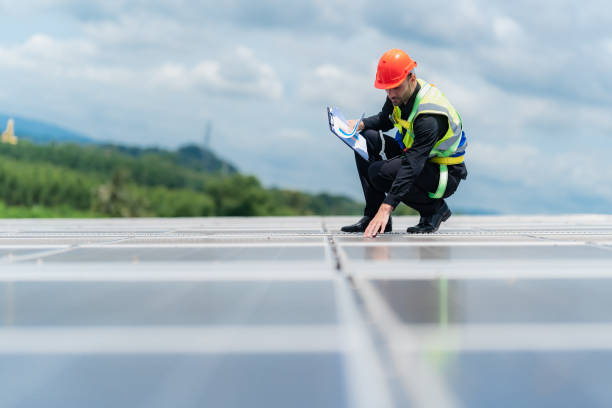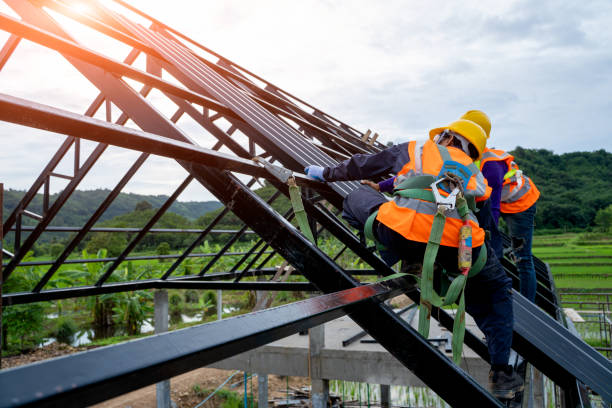
When it comes to commercial roofing, the difference between a bad installation and a good one can have significant long-term implications for your building’s structural integrity, energy efficiency, and overall maintenance costs. As a facility manager or property owner, understanding these differences will help you identify issues early and ensure that your roof performs as expected.
Signs You Hired the Wrong Commercial Roofing Company Phoenix, AZ
- Visible Seams or Gaps: Improper sealing at seams allows water infiltration, which can lead to leaks and water damage over time.
- Wrinkling or Bubbling: This indicates poor adhesion of the roofing materials or improper handling during installation.
- Inconsistent Drainage: Improper slope design or clogged drainage points can result in ponding water, which accelerates roof deterioration.
- Premature Wear and Tear: Signs such as cracks, splits, or membrane peeling shortly after installation suggest low-quality materials or poor craftsmanship.
- Improper Flashing Installation: Flashing that is loose, misaligned, or missing creates vulnerabilities where water may penetrate the roof system.
- Lack of Documentation: A questionable contractor may fail to provide proper warranties or detailed documentation on the project scope.
These issues not only compromise the functionality of your roof but also increase repair costs and shorten its lifespan.
Key Traits of a Reliable Commercial Roofing Contractor in Phoenix, AZ
- Precise Material Application: Roofing materials are carefully installed with attention to detail across all sections, ensuring uniform coverage and proper adhesion.
- Clean Seams and Edges: Properly sealed seams prevent water ingress, reducing the risk of leaks down the line.
- Effective Drainage Systems: A well-installed roof includes adequate slope design with functional drainage systems to prevent standing water.
- Thorough Inspections During Installation: Professional contractors conduct inspections at various stages to ensure each layer is applied correctly before proceeding further.
- Proper Flashing Integration: Flashing around vents, HVAC systems, and other protrusions is securely fastened without gaps or mismatched edges.
- High-Caliber Materials Used: Quality installations rely on durable roofing membranes like TPO (thermoplastic polyolefin), EPDM (ethylene propylene diene terpolymer), or PVC (polyvinyl chloride) suited for the specific roofing environment.
Visual Comparison Table for Industrial Roofing in Phoenix, AZ
| Feature | Bad Installation | Good Installation |
| Seams | Visible gaps; poorly sealed | Smooth; properly bonded |
| Drainage | Ponding water; poor slope design | Clear pathways; effective drainage |
| Materials | Low-grade; prone to early degradation | Premium-grade; durable |
| Flashing | Misaligned; loosely attached | Tight fit; securely installed |
| Longevity | Short lifespan due to frequent repairs | Long-lasting with minimal upkeep |
The Importance of Commercial Flat Roofing in Phoenix, AZ
- Reduced maintenance costs over time by preventing leaks and structural damage.
- Improved energy efficiency through proper insulation and material application.
- Compliance with safety codes and warranty requirements.
Investing in professional expertise during the initial installation phase saves money in the long run by avoiding costly repairs caused by substandard work. Recognizing these traits will empower you to choose contractors who deliver lasting results while protecting your investment effectively.
Comparing Flat Roofs and Low-Sloped Roofs for Commercial Roof Installation in Phoenix, AZ
When it comes to commercial roofing systems, understanding the distinction between flat and low-sloped roofs is essential for making informed decisions. While these two roof types may appear similar at first glance, their differences significantly impact performance, maintenance, and overall longevity. Below is a detailed exploration of the key differences between flat and low-sloped roofs.
Defining Flat Roofs
Flat roofs are often characterized by their minimal slope, typically ranging between 0° and 2°. Despite being referred to as “flat,” these roofs are not perfectly horizontal. A slight slope is always incorporated to allow for water drainage.
Advantages of Flat Roofs:
– Cost-Effectiveness: Due to their simpler design and reduced material requirements, flat roofs are often more affordable to install compared to other roofing systems.
– Ease of Access: The level surface provides convenient access for maintenance or installation of HVAC equipment, solar panels, and other rooftop systems.
– Optimal Use of Space: Flat roofs can serve as additional usable space for green roofing systems or rooftop gardens in urban settings.
Potential Drawbacks:
– Drainage Challenges: Poor drainage can lead to ponding water, which increases the risk of leaks over time if not addressed properly.
– Restricted Material Options: Some roofing materials may not be suitable for flat surfaces due to water retention concerns.
Defining Low-Sloped Roofs
Low-sloped roofs have a steeper incline compared to traditional flat roofs but still fall within a specific range—typically with a slope between 2/12 (9.5°) and 4/12 (18°). This subtle incline enhances water runoff while maintaining many benefits associated with flat roof designs.
Advantages of Low-Sloped Roofs:
– Improved Drainage Capabilities: The increased slope allows rainwater and snowmelt to drain more effectively, reducing risks associated with standing water. – Broader Material Use: Low-sloped designs are compatible with a wider range of durable roofing materials like metal panels or modified bitumen membranes. – Enhanced Durability: With better drainage comes less stress on the roofing system over time, contributing to longer lifespans in many cases.
Potential Drawbacks:
– Higher Installation Costs: The design complexity often requires additional labor or materials compared to flat roofs. – Accessibility Limitations: While still easier than steep-pitched designs, low-slope roofs may be less accessible than fully flat ones for some maintenance tasks.
Comparison Table: Flat vs. Low-Sloped Roofs
| Features | Flat Roof | Low-Sloped Roof |
| Slope | Minimal (0°–2°) | Moderate (up to 4/12 pitch) |
| Drainage Efficiency | Lower | Higher |
| Material Options | Limited | Expansive |
| Installation Cost | Generally Lower | Slightly Higher |
| Usable Rooftop Space | High | Moderate |
Factors Influencing Your Decision
- Climate Conditions: Areas prone to heavy rainfall or snow benefit from better drainage offered by low-sloped designs.
- Budget Constraints: If cost-efficiency is your priority, a flat roof may be preferable.
- Long-Term Goals: Consider whether you plan on integrating rooftop installations such as solar panels or green spaces that require specific structural accommodations.
By understanding these distinctions and balancing them against your priorities, you’ll be better equipped to choose a commercial roofing system that serves both functional requirements and long-term sustainability goals effectively.
Flat Roof vs. Low-Sloped Roof: Understanding the Key Differences in Commercial Roofing Systems
When it comes to commercial roofing systems, choosing between a flat roof and a low-sloped roof is a critical decision that impacts not only the building’s functionality but also its longevity, energy efficiency, and maintenance requirements. To help property owners and facility managers make an informed decision, it’s essential to understand the differences between these two roofing types.
Key Characteristics of Flat Roofs
Flat roofs are one of the most common choices for commercial buildings due to their cost-effectiveness and ease of installation. While often referred to as “flat,” these roofs typically have a slight slope (around 1/4 inch per foot) to allow water drainage.
Advantages: – Cost Efficiency: Flat roofs require fewer materials compared to sloped designs, making them more affordable upfront. – Space Utilization: They provide additional usable space for HVAC units, solar panels, or rooftop gardens. – Ease of Maintenance: Accessibility for inspections or repairs is much simpler compared to steep slopes.
Challenges: – Drainage Issues: Despite the slight slope, water pooling is a common problem if not properly maintained or designed. – Shorter Lifespan: Weather conditions and standing water can cause wear over time if not addressed promptly.
Key Characteristics of Low-Sloped Roofs
Low-sloped roofs are defined by their gentle incline—typically ranging from 2:12 to 4:12 pitch (rise over run). These designs combine some advantages of flat roofs while offering improved drainage capabilities.
Advantages: – Improved Drainage: With more pronounced angles than flat roofs, water runoff is more efficient. – Versatility in Materials: Low-sloped systems can accommodate a wider variety of roofing materials like metal panels or shingles. – Enhanced Longevity: Proper drainage reduces the risk of leaks and structural damage.
Challenges: – Higher Installation Cost: The additional slope requires more materials and labor. – Aesthetic Considerations: The appearance may not suit every architectural design preference.
| Feature | Flat Roof | Low-Sloped Roof |
| Drainage | Minimal slope; prone to pooling | Improved drainage with steeper slope |
| Installation Cost | Lower upfront costs | Higher due to added materials |
| Maintenance Access | Easier accessibility | Moderate accessibility |
| Material Options | Limited | More diverse options available |
| Lifespan | Shorter without vigilant upkeep | Longer with proper installation |
Choosing the Right Option for Your Building
When deciding between a flat roof and a low-sloped roof for your commercial property, consider factors such as climate conditions, budget constraints, long-term maintenance commitments, and intended use of rooftop space. For example: – If you plan to install solar panels or HVAC units on your roof, flat roofs offer better accessibility. – In areas with heavy rain or snow accumulation, low-sloped roofs are ideal due to their superior drainage properties.
Consulting with experienced professionals who specialize in commercial roofing can help ensure that your choice aligns with your building’s specific needs while achieving long-term performance.
How to Effectively Integrate Solar Panels into Your Commercial Roofing System
Integrating solar panels into a commercial roofing system is an effective way to reduce energy costs, improve sustainability efforts, and increase the overall value of a building. However, this process requires careful planning and execution to ensure compatibility with the existing roofing structure while maximizing efficiency. Below is a detailed guide on how to effectively integrate solar panels into your commercial roofing system.
Assessing Roof Suitability
- Roof Age and Condition:
Ensure the roof has enough remaining lifespan to support solar panel installation. Installing solar panels on a roof nearing its end-of-life can lead to costly removal and re-installation down the line. - Structural Integrity:
Verify that the roof can support additional weight from solar panel systems without compromising its structure or safety. - Orientation and Sunlight Exposure:
Analyze how much direct sunlight the roof receives throughout the day. South-facing or flat roofs often provide optimal exposure for maximum energy generation.
Choosing Compatible Solar Panel Systems
| Roof Type | Recommended Solar Panel System |
| Flat Roofs | Ballasted or non-penetrating rack-mounted systems |
| Low-Sloped Roofs | Tilted racking systems for optimal sun exposure |
| Metal Roofs | Thin-film solar panels that adhere directly to metal surfaces |
Work with a professional roofing contractor who understands your specific roof type and can recommend appropriate solutions.
Collaborating with Roofing Professionals and Solar Experts
- Roofing professionals can help assess whether any pre-installation repairs or reinforcements are needed.
- Solar experts can design a system that maximizes energy efficiency while adhering to local codes and regulations.
- They can coordinate installation efforts so neither party compromises the performance or warranty of your existing roof system.
Protecting Your Investment with Warranties and Maintenance Plans
- Roofing Warranty Compatibility: Ensure that adding solar panels does not void your current commercial roofing warranty.
- Solar Panel Warranties: Look for comprehensive warranties covering both performance output (usually 20–25 years) and equipment defects.
- Maintenance Plans: Schedule routine inspections for both your roof and panels to identify issues early, such as leaks around mounting points or degraded electrical connections.
Advantages of Solar Integration in Commercial Roofing
- Lower Energy Costs: Generate renewable energy onsite, reducing dependence on utility providers.
- Sustainability Goals: Decrease carbon footprint by leveraging clean energy sources.
- Financial Incentives: Take advantage of government tax credits, rebates, or grants designed for businesses investing in renewable energy.
- Increased Property Value: Buildings equipped with renewable technology often have higher market appeal.
Proper planning and professional guidance are essential when incorporating solar technology into commercial roofs. By addressing structural considerations, selecting compatible systems, adhering to warranties, and maintaining regular upkeep, businesses can enjoy long-term energy savings coupled with environmental benefits while extending their property’s overall value.
Recognizing the Importance of Professional Expertise in Identifying Poor Commercial Roof Installations
Commercial roofs are a critical component of any facility, protecting assets, employees, and operations. However, improperly installed roofing systems can lead to costly repairs, energy inefficiencies, and even premature roof failure. Recognizing poor workmanship early is essential to prevent these issues. This is where professional expertise plays a pivotal role.
Common Signs of a Poor Commercial Roof Installation
- Wrinkled or Bubbled Membranes: In flat or low-sloped roofs with membrane systems (e.g., TPO or EPDM), bubbling or wrinkling often indicates improper adhesion or insufficient surface preparation during installation.
- Poor Flashing Work: Flashing around roof penetrations like vents and HVAC units should be seamless and watertight. Gaps or misaligned flashing point to poor craftsmanship and pose significant risk for water infiltration.
- Insufficient Drainage Systems: Ponding water can weaken roofing materials over time. Improperly placed drains, gutters, or slopes suggest inadequate planning during installation.
- Fastener Misalignment: In metal roofing systems, loose screws or misaligned fasteners can lead to structural instability and leaks over time.
- Uneven Insulation Layers: Uneven insulation not only compromises energy efficiency but also creates irregularities beneath the roofing membrane that could accelerate wear-and-tear.
Why Professional Expertise Is Crucial
While basic visual inspections may reveal obvious flaws, professional roofing experts bring highly specialized technical knowledge that ensures thorough evaluation of your commercial roof system.
- Advanced Diagnostic Tools: Professionals utilize tools such as infrared thermography to detect hidden moisture within the roof assembly—a key sign of leaks caused by poor installation practices.
- Detailed Knowledge of Building Codes: Expert contractors understand local building codes and safety regulations, ensuring your commercial roof complies with all applicable standards.
- Warranty Protection Assessment: A professional inspection can determine whether improper installation methods have voided manufacturer warranties on materials used in your system.
- Comprehensive Reporting: An expert will provide detailed inspection reports outlining existing issues, recommended repairs, and estimated costs for remediation.
Benefits of Hiring Professional Inspectors
| Benefit | Description |
| Early Problem Detection | Professionals identify potential problems before they escalate into costly repairs or replacements. |
| Cost Savings | Timely identification of issues reduces operational downtime and repair costs over time. |
| Increased Lifespan | Ensuring proper maintenance after an expert inspection can extend your roof’s lifespan significantly. |
| Peace of Mind | Facility managers gain confidence knowing their commercial roof meets high industry standards. |
Tips for Selecting the Right Roofing Professional
- Verify certifications from reputable organizations like NRCA (National Roofing Contractors Association) or similar industry bodies.
- Request references from past commercial projects comparable in scope.
- Confirm insurance coverage to protect against any liabilities during inspection/repairs.
- Ensure familiarity with your specific roofing system—whether it’s PVC membranes, metal panels, built-up roofing (BUR), etc.
Recognizing poor installations on commercial roofs requires more than just superficial observation; it demands expertise rooted in industry experience and technical acumen—a resource every facility manager should rely on for safeguarding their building investment effectively over time.
Exploring the Key Features of High-Quality Commercial Roof Installations
When considering a commercial roof installation, understanding the attributes of a high-quality installation is essential. A well-installed commercial roof not only ensures the longevity of the structure but also reduces maintenance costs and minimizes the risks associated with leaks or premature failure. Below is an in-depth exploration of what constitutes a superior commercial roof installation.
Key Features of a High-Quality Commercial Roof Installation
- Effective drainage prevents water pooling, which can lead to structural damage and compromised roofing materials.
- Adequately sloped surfaces for water runoff.
- Strategically placed drains, gutters, and downspouts to direct water away from the building.
- Regularly maintained drains to prevent clogs and overflow issues.
- Membranes such as TPO (Thermoplastic Olefin), PVC, or EPDM that are resistant to UV exposure and harsh weather conditions.
- Advanced insulation materials like polyiso or mineral wool for energy efficiency.
- Reinforced flashing around edges, vents, and roof penetrations to prevent water intrusion.
- Heat-welded seams for TPO or PVC membranes ensure durability over time compared to adhesive-applied seams.
- Properly installed flashing around rooftop equipment (e.g., HVAC units) reduces vulnerabilities often prone to leaks.
- Multi-layer barrier systems protect against moisture infiltration during severe weather events.
- Cool roofing options (white reflective membranes) can minimize heat absorption in warmer climates.
- Expert Craftsmanship by Certified Contractors
A professional team with experience in commercial roofing is vital for ensuring precise installation methods are followed: - Certified contractors use industry-standard tools and techniques.
- They conduct thorough inspections at every stage of the installation process.
- Attention is paid to details such as consistent fastening patterns and proper overlaps between membrane sheets.
Benefits of Investing in High-Quality Roof Installations
| Feature | Impact on Performance | Long-Term Advantages |
| Durable Materials | Enhanced resistance against wear and tear | Lower repair costs |
| Proper Insulation | Improved energy efficiency | Reduced utility bills |
| Seam Integrity | Minimized risk of leaks | Longer lifespan with fewer disruptions |
| Certified Installation Practices | Reliable performance under various conditions | Peace of mind for facility managers |
Indicators That Your Commercial Roof Installation Is High Quality
- The roof warranty offered aligns with industry standards (15-20 years).
- Post-installation inspection reveals no visible defects such as bubbles, wrinkles, or gaps in seams.
- Optimal thermal performance is observed through reduced energy consumption metrics after installation.
- There is no pooling water on flat sections post-rainfall due to effective drainage design.
By understanding these key features and working with experienced contractors who prioritize quality workmanship, businesses can ensure their commercial roofs deliver long-term value while protecting their investments effectively over time.
Modern Innovations and Sustainable Materials in Commercial Roofing Solutions
The commercial roofing industry has witnessed substantial advancements in recent years, driven by the demand for energy efficiency, sustainability, and durability. Facility managers and business owners now have access to modern innovations and sustainable materials that not only extend the lifespan of roofs but also contribute to environmental responsibility. Here is an overview of some of the most notable trends and technologies shaping the commercial roofing landscape.
Innovative Commercial Roofing Technologies
- Reflect solar radiation, reducing heat absorption.
- Helps maintain interior building temperatures, decreasing cooling costs.
- Common materials: elastomeric coatings, silicone-based coatings.
- Utilize vegetation layers installed on rooftops.
- Improve thermal insulation and reduce heat island effects in urban areas.
- Offer stormwater management benefits by absorbing rainfall.
- Seamlessly integrate solar technology into roofing systems.
- Allow businesses to generate renewable energy on-site.
- Can be combined with flat or low-sloped roofing systems for maximum efficiency.
- Incorporates sensors to monitor performance in real-time (e.g., moisture detection).
- Provides valuable insights into roof conditions, allowing for preventive maintenance.
- Reduces long-term repair costs by identifying issues early.
Sustainable Materials for Commercial Roofing
| Material | Sustainability Benefits | Durability Rating |
| Recycled Metal | Made from recycled content; fully recyclable at end of life | Lasts 40-70 years |
| TPO (Thermoplastic Polyolefin) | Energy-efficient with reflective properties | Resistant to UV rays & chemicals |
| EPDM Rubber | Long-lasting; excellent thermal insulation | Typically lasts 25-30 years |
| Modified Bitumen | Incorporates recycled polymers; minimizes waste | Durable against extreme weather |
Advantages of Modern Innovations
- Energy Efficiency: Cool roofs and solar panels significantly reduce operating costs associated with heating or cooling a building.
- Environmental Impact Reduction: Sustainable options like green roofs or recycled metal help lower carbon footprints and conserve resources.
- Extended Longevity: Advanced materials such as TPO membranes or EPDM rubber are built to withstand heavy wear while maintaining structural integrity over decades.
- Regulatory Compliance: Many modern solutions align with green building certifications such as LEED standards or local environmental codes.
Challenges to Consider
While these advancements offer substantial benefits, it is essential to be aware of potential challenges:
– Initial installation costs may be higher than traditional options but are offset by long-term savings on energy and maintenance expenses. – Some systems require specialized expertise for proper installation (e.g., PV panels or green roofs). – Regular inspections are essential to ensure optimal performance over time.
Modern innovations in commercial roofing provide businesses with a unique opportunity to invest in solutions that prioritize sustainability without compromising functionality or durability. As technology continues to evolve, these advancements are expected to become even more accessible and affordable across industries.
Modern Innovations and Sustainable Materials in Commercial Roofing Solutions
As the demand for energy efficiency and environmental consciousness continues to grow, commercial roofing systems are evolving rapidly. Modern innovations and sustainable materials have become essential components of high-performing roofing solutions. For businesses looking to reduce their carbon footprint while enhancing the durability and efficiency of their facilities, understanding these advancements is key.
Key Innovations in Commercial Roofing
- Cool Roofing Technology
Cool roofs are designed to reflect more sunlight and absorb less heat than traditional roofing systems. They help maintain lower building temperatures, reducing dependency on air conditioning systems. Features include: - Reflective coatings or membranes
- Light-colored materials with high solar reflectance ratings
- Reduced urban heat island effect
- Green Roofs
Green roofs incorporate vegetation layers on the roof surface, offering numerous environmental benefits. These include: - Improved insulation, reducing energy costs
- Stormwater management by absorbing rainwater
- Enhanced air quality through carbon sequestration
- Built-In Solar Roofing Systems
Solar technologies integrated within roofing systems allow businesses to generate renewable energy directly from their roof surfaces. Options include: - Solar shingles or tiles that blend seamlessly with the roof design
- Panel-mounted systems compatible with flat or low-sloped roofs
- Smart Roof Systems
Advances in technology have led to “smart” roofing solutions equipped with sensors that monitor performance metrics such as temperature, humidity, and overall system health. Benefits encompass: - Early detection of damage or leaks
- Improved maintenance decision-making through data collection
Sustainable Roofing Materials
| Material | Benefits | Lifespan (years) |
| Recycled Metal Roofs | Long-lasting, recyclable at end-of-life | 40–70 |
| TPO (Thermoplastic Polyolefin) | Energy-efficient due to its reflective properties; recyclable options available | 20–30 |
| EPDM Rubber Membranes | Durable, low-maintenance material made from synthetic rubber | 20–35 |
| Modified Bitumen | Contains recycled content; suitable for various climates | 10–20 |
Benefits of Adopting Sustainable Commercial Roofing
- Energy Efficiency: Reflective and insulated designs reduce heating and cooling loads.
- Cost Savings: Lower utility bills due to improved thermal performance.
- Environmental Impact: Use of recycled or long-lasting materials reduces waste sent to landfills.
- LEED Certification Opportunities: Many sustainable roofing options can contribute toward green building certifications.
Future Trends in Commercial Roofing Innovations
The future of commercial roofing will likely see further integration of renewable technologies, enhanced durability features, and increased use of eco-friendly materials such as bio-based composites or fully circular-material designs.
By adopting these modern innovations today, companies can ensure their buildings remain efficient, environmentally responsible, and well-equipped to handle future challenges in sustainability and performance.
- A Comprehensive Guide to Hiring a Commercial Roofing Company Phoenix, AZ
- Signs of a Bad Commercial Roofing Phoenix, AZ Installation vs. a Proper One
- The Complete Guide to Hiring a Commercial Roofing Company Phoenix, AZ for Your Business
- Choosing the Best Commercial Roofing Contractor Phoenix, AZ for Your Business Needs
- Understanding Key Regulations and Standards for a Commercial Roofing Company Phoenix, AZ Property Owners and Contractors
- A Complete Guide to Commercial Roofing Phoenix, AZ Systems
- How Long Does a Commercial Roofing Company Phoenix, AZ Take for Metal Roof Installation?

